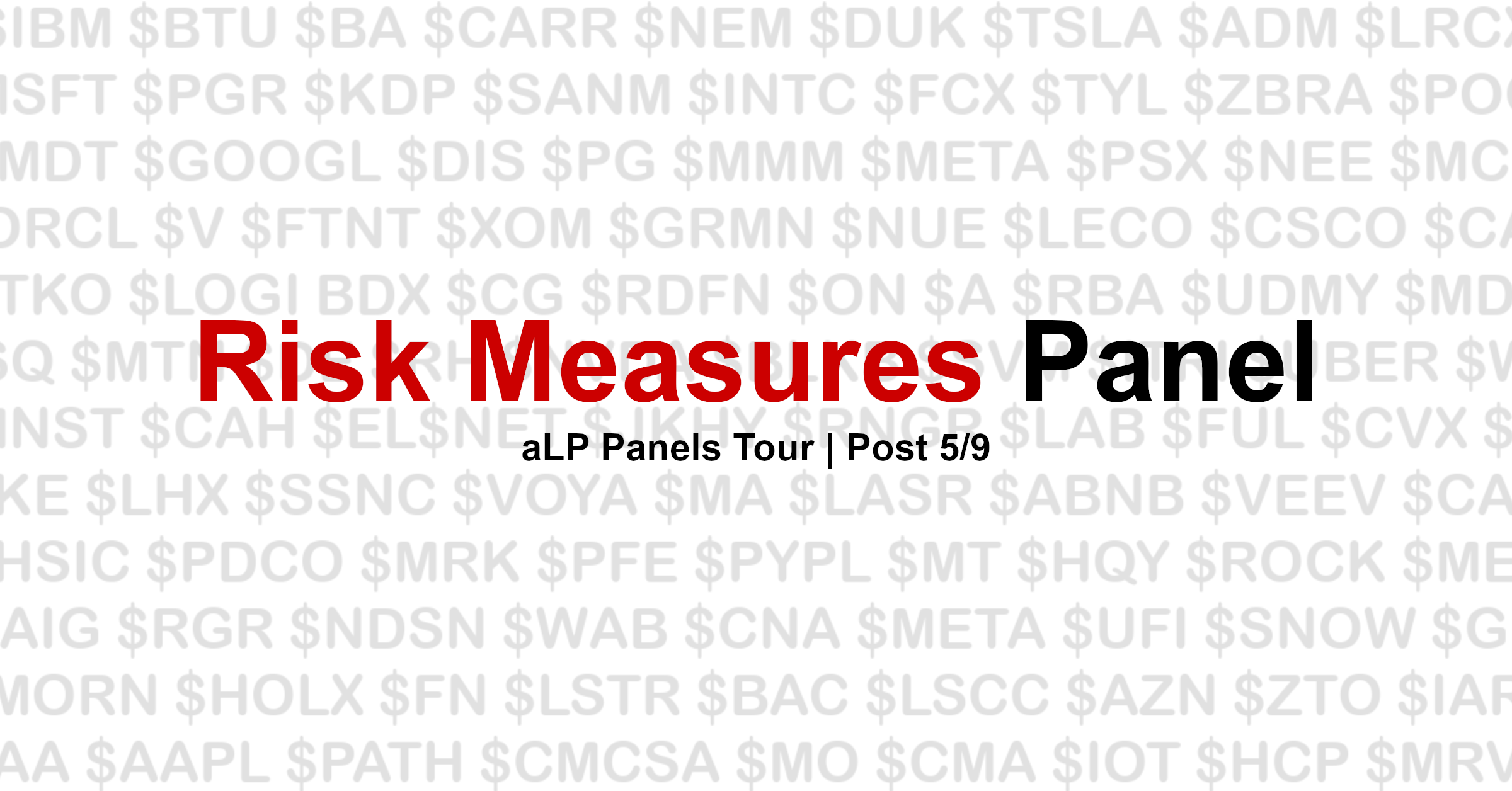
Risk Measures Panel
This post highlights actionList.Pro's Risk Measures panel and is part of the aLP Panels Tour, a series of posts published to introduce select actionList.Pro features, benefits and related use cases.
July 24, 2024 02:05:00 PM ET
PONTE VEDRA, FL --(actionList.Pro)-- The Risk Measures panel presents a collection of risk measures associated with the stock ticker symbols and positions included on the $actionList and #Shares panels. Based on the most recent 252 sessions, or approximately one year, they are:
- aLP Sigma (σ) - Standard deviation of daily returns. A statistical measure used to quantify the dispersion of returns around the average return. Higher (Lower) standard deviations imply a higher (lower) level of return volatility, and suggest a greater (lower) level of risk.
- aLP Beta (β) - A given stock's Beta coefficient helps specify its risk relative to the stock market. The overall stock market's Beta may be considered as 1.00. Stocks with Beta values greater (less) than 1.00 are seen as riskier (less risky) than the overall stock market. E.g., a stock with a Beta coefficient of 1.20 has historically produced returns (and losses) of 1.20 times those of the overall stock market.
- aLP Sharpe Ratio (𝒮) - The Sharpe ratio assesses a given security's excess return relative to the standard deviation of excess returns. Loosely speaking, it specifies return per unit of risk. The higher the Sharpe ratio, the more efficiently a given security has been at producing returns relative to the level of associated risk.
- aLP Historical VaR - Historical VaR is used to help estimate a given position's potential greatest loss over a given period of time, with a given level of confidence. aLP's Historical VaR measure is based on 252 daily sessions, and a 99% level of confidence. E.g., For a given position, a VaR of $1,000.00 suggests that, based on historical data one might expect worse than a one day loss of $1,000.00 on 1 out of 100 days. This risk measure is only calculated for stock ticker symbols that are paired with a share count.

Image 1 - Risk Measures Panel
The aLP risk measures are presented in the familiar table format that features sortable columns, making rankings and relative comparisons easy. As with the Allocations panel, the table's stock ticker symbols are linked to the related companies' home pages. See Image 1. It is important to keep in mind that the risk measures are based on 252 sessions of historical data, and that past results are not an indication of future results.
If you enjoyed learning about actionList.Pro's Risk Measures panel, consider this your invitation to register for a no-strings-attached free trial, available at: www.actionlist.pro. And don't forget to share this post with a friend! For updates and news from actionList.Pro, subscribe to the actionList.Pro RSS Feed.
About actionList.Pro
actionList.Pro™ serves as an integrated watchlist platform that positions its customers to independently monitor risk and reward attributes associated with individual stocks, or stock positions, and efficiently draw insight from across perspectives that scale from high-level capital market factors to industrial index and stock-specific price trend strength indicators. It allows for monitoring activities to take place within the context of an informational framework consisting of risk and reward related measures with the potential to drive change, and serves as an enabling technology that provides its customers with meaningful time savings while deepening their stock market insights.
Source: actionList.Pro LLC
Hashtags: #actionlistpro #stocks #stockmarket #trends #watchlist #risk #standarddeviationofreturns #beta #sharperatio #historicalvalueatrisk #var
Important Note: This blog post does not contain investment advice. It is published within the scope of actionList.Pro's, Terms of Use Agreement and Privacy Policy. Its content is only current at the time of publication, and may change at any time thereafter. Past performance is not an indication of future performance. You are strongly advised to obtain qualified financial counsel prior to selecting a course of action related to your finances.
